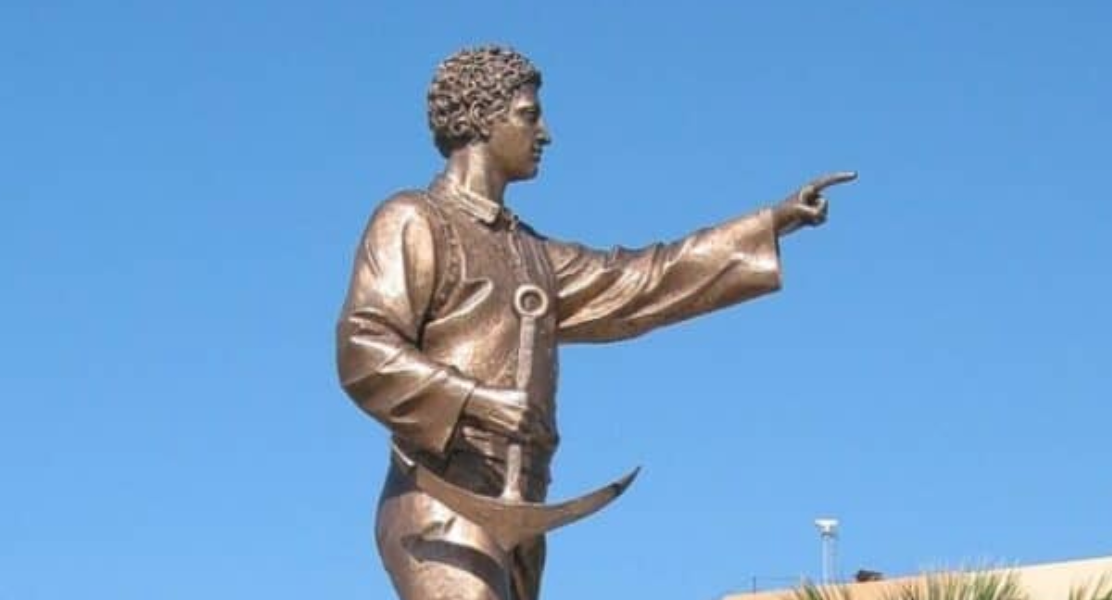
The first Greek known to have stepped foot into the USA is Theodoros Griego, a sailor who landed on Florida with the Spanish Narváez expedition on April 14, 1528. He died during the expedition, as did most of his companions.
Theodoros Griego was a Greek explorer and conquistador, he was born in the Aegean and later moved to Spain. He then set sailed from the Spanish port of Sanlucar de Barrameda and followed Panfilo de Narvaez in his expedition to North America.
He was one of the first Greeks to reach the new continent (America). The expedition sailed from Cuba and reached Florida.
Narvaez ordered his men to explore Florida and march further to the north, in 1528 they reached the Apalachee, but Narvaez arrogantly attacked the Indians and destroyed their settlements. Soon after they were attacked by the Apalachee warriors and they run out of resources. At that difficult moment Don Theodoro made 5 rafts, using liquid from pines, wood and leather and saved most of his companions.
Eventually, Don Theodoro Griego was killed searching for water in a nearby Indian settlement. Most of the men who participated in the Narvaez expedition were killed, including Narvaez himself and only 4 survived to tell the story.
Today a statue has been erected in Florida in the city of Tampa in honour of this great Greek conquistador and explorer.

In 1592, Greek captain Juan de Fuca (Ioannis Fokas or Apostolos Valerianos) sailed up the Pacific coast under the Spanish flag, in search of the fabled Northwest Passage between the Pacific and the Atlantic. He reported discovering a body of water, a strait which today bears his name: the Strait of Juan de Fuca, which today forms part of the Canada–United States border.
About 500 Greeks from Smyrna, Crete, and Mani settled in New Smyrna Beach, Florida in 1768. The colony was unsuccessful, and the settlers moved to St. Augustine in 1776.
The St Photios Greek Chapel exists as a remnant of their presence and is believed to be the oldest still standing Greek Orthodox religious structure in the United States.
The first significant Greek community to develop was in New Orleans, Louisiana during the 1850s. By 1866, the community was numerous and prosperous enough to have a Greek consulate and the first official Greek Orthodox Church in the United States. During that period, most Greek immigrants to the New World came from Asia Minor and those Aegean Islands still under Ottoman rule. By 1890, there were almost 15,000 Greeks living in the U.S.
Immigration picked up again in the 1890s and early 20th century, due largely to economic opportunity in the U.S., displacement caused by the hardships of Ottoman rule, the Balkan Wars, and World War I. Most of these immigrants had come from southern Greece, especially from the Peloponnesian provinces of Laconia and Arcadia.

450,000 Greeks arrived to the States between 1890 and 1917, most working in the cities of the northeastern United States; others laboured on railroad construction and in mines of the western United States; another 70,000 arrived between 1918 and 1924. Each wave of immigration contributed to the growth of Hellenism in the U.S.
Many Greek immigrants expected to work and return to their homeland after earning capital and dowries for their families. However, the loss of their homeland due to the Greek Genocide and the 1923 population exchange between Greece and Turkey, which displaced 1,500,000 Greeks from Anatolia, Eastern Thrace and Pontus caused the initial economic immigrants to reside permanently in America. The Greeks were de jure denaturalized from their homelands and lost the right to return, and their families were made refugees.
Additionally, the first widely implemented U.S. immigration limits against non Western European immigrants were made in 1924, creating an impetus for immigrants to apply for citizenship, bring their families and permanently settle in the U.S. Fewer than 30,000 Greek immigrants arrived in the U.S. between 1925 and 1945, most of whom were “picture brides” for single Greek men and family members coming over to join relatives.
The events of the early 1920s also provided the stimulus for the first permanent national Greek American religious and civic organisations. Greeks again began to arrive in large numbers after 1945, fleeing the economic devastation caused by World War II and the Greek Civil War. From 1946 until 1982, approximately 211,000 Greeks emigrated to the United States. These later immigrants were less influenced by the powerful assimilation pressures of the 1920s and 1930s and revitalised Greek American identity, especially in areas such as Greek-language media.
Greek immigrants founded more than 600 diners in the New York metropolitan area in the 1950s through the 1970s. Immigration to the US from Greece peaked between the 1950s and 1970. After the 1981 admission of Greece to the European Union, annual U.S. immigration numbers fell to less than 2,000. In recent years, Greek immigration to the United States has been minimal; in fact, net migration has been towards Greece. Over 72,000 U.S. citizens currently live in Greece (1999); most of them are Greek Americans.
In the aftermath of the Greek financial crisis, there has been a resurgence of Greek emigration to New York City since 2010, accelerating in 2015, and centered upon the traditionally Greek enclave of Astoria, Queens.


